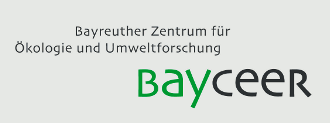| Pinto, M; Merino, P; del Prado, A; Estavillo, JM; Yamulki, S; Gebauer, G; Pietrzak, S; Lauf, J; Oenema, O: Increased emissions of nitric oxide and nitrous oxide following tillage of a perennial pasture, Nutrient Cycling in Agroecosystems, 70, 13-22 (2004), doi:10.1023/B:FRES.0000049357.79307.23 | |
| Abstract: About 40% of the agricultural land in the European Union (EU) is grassland used for animal production. When grassland is tilled, organically bound carbon and nitrogen are released, providing substrates for nitrifying and denitrifying microorganisms. The aim of this study was to examine the immediate effects of tillage of a perennial grassland carried out on different dates, on the emissions of nitric oxide (NO) and nitrous oxide (N2O), monitored intensively over a 5-day period, in a humid, dairy farming area of northern Spain. Soil was tilled 12 days and 2 days prior to fertiliser application. Tillage, time of tillage, and N fertiliser application affected NO and N2O emissions. Tillage 12 days before the start of the flux measurements resulted in higher emissions than tillage one day before, the difference being related to differences in soil mineral N and water-filled pore space (WFPS). Emissions of NO peaked at a WFPS of 50-60%, while N2O fluxes peaked at 70-90% WFPS. Loss of N was greater as N2O than as NO. The total loss of N as N2O plus NO ranged from 0.027 kg N ha-1 in unfertilised plots to 0.56 kg N ha-1 in the tilled and N fertilised plot. Thereafter emissions decreased rapidly to low values. The results of this study indicate that tillage of perennial grassland may release large amounts of NO and N2O, the amounts also depending on moisture conditions and addition of N fertiliser. We suggest that in order to reduce such emissions, application of N fertiliser should not immediately follow tillage of perennial grassland, as there is an extra supply of N from mineralisation of organic matter at this time. |


Letzte Änderung 29.01.2013
